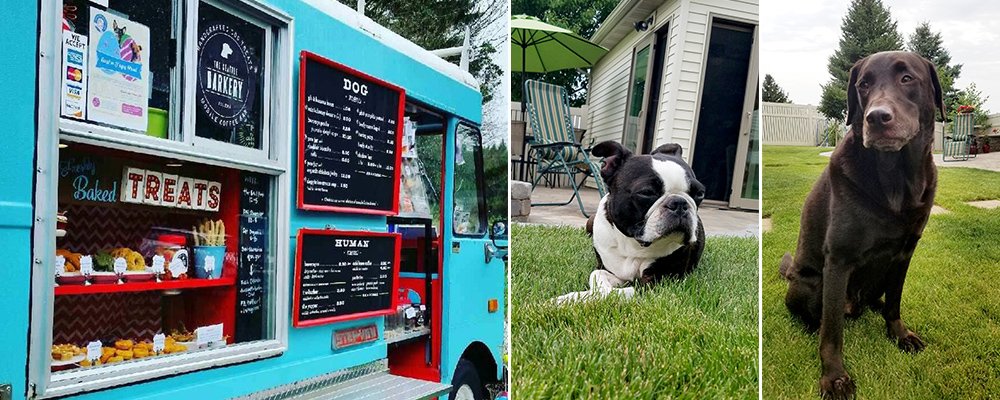One Big Idea for Big Box Retail: Curate Your Connections
Food Truck and Farmers’ Market Moments Keep It Real
I was running errands a few weeks ago when I spotted an unusual truck parked in my local shopping center. The aquamarine-colored truck sported a body style reminiscent of an old school ice cream truck. A closer look revealed the name ‘Seattle Barkery’ on the side and back panels. I was curious. A food truck filled with baked goods … for dogs? Yes! As a dog owner and a self-described dog fanatic, I had to check it out.
A short conversation later, I got their background story, learned how they got started and where they were located from week-to-week. The owner told me about an upcoming dog festival, a previously unknown off leash dog park, and a potential dog boarding facility I might check out. I got treats for my dogs, obtained some great information and, most importantly, became more deeply engaged and immersed in one of my passion areas. A connection was formed.
Non-traditional retail makes it personal by connecting authentically. Seattle Barkery food truck keeps it real for their consumers AND their dogs (lust like these two yappy customers, Ozy the Boston Terrier and Axel the Chocolate Lab).
But here’s the thing…my desire to engage with Seattle Barkery continued beyond my single purchase. And this, my friends, is the thing that all brand marketers dream about!
The Seattle Barkery’s brand really broke through for me. The owner shared their time and knowledge to engage me and I felt a connection to the proposition and the people behind it:
1. The owner casually encouraged me to check them out on Facebook.
2. I took a photo, shared it on social media and tagged the brand.
3. The brand, in turn, immediately liked my post and gave me a shout out thank you back.
4. Ok, I was hooked! And then I started spreading the word.
5. Now I also had easy access to their calendar and event updates … next time, I will bring my dogs to the Barkery!
6. If they want to get my input on new menu items or services, I said I’d be happy to help them out.
7. I have purchased from them again.
Social media sharing, the life blood of pop ups and food trucks, puts consumers in close conversation with the retailers they discover. Instagram-worthy ... oh yes!
Food trucks and their close cousins (the farmer’s market and pop-up retailer) are not a new phenomenon. They clearly have their benefits as an incubator for innovation, are low-risk, provide a wealth of immediate consumer feedback, are nimble, etc.
But, as my Seattle Barkery example shows, perhaps one of the biggest benefits in these non-traditional retail venues is the way in which they allow such an immediate connection and personal engagement with consumers. Theconsumer is able to connect directly with his/her “tribe” via the owner, farmer, or chef. Stripped away are the layers of production, manufacturing, and merchandising. The relationship becomes the quintessential true and authentically ideal farm to table or crafter to consumer experience.
The slow decline of brick & mortar retail signals consumers’ increasing desire for speed and convenience, variety and choice and competitive prices available with e-commerce. However, what I believe both traditional box stores and e-commerce each fail to do well is relationship, engagement, and connection. Some attempts and proxies have been tried, to be sure. Personal shopping services, beefed up customer service, free shipping and returns, customized recommendations are all ways in which retail has made moves to improve. [Related: be on the look out for my upcoming post on the subscription box trend and my own experiments with it]
But, I wonder what else could be done to bring my typical shopping trip – both in-store and online – much closer to my Seattle Barkery experience? The retailer that does it best for you might just be the one that syncs up with one of your passions. Perhaps that grocer who recognizes you and calls you by name when you check out? Or, is it the coffee shop with the barista that asks if you want the usual drink when he or she greets you? If you stop to consider which retailers offer an authentic connection, you’re likely to find that there is usually a personal and human element involved. Although automation will continue to serve the purpose of speed and convenience, we should avoid dehumanizing our commerce at the peril of isolation.
Farmer, Darrel Westover of Westover Farms in Maple Valley, WA sells his produce with a smile at the Issaquah Farmer's Market (photo credit @zoomebosh of https://zoomeboshi.com)
What do you think? How could brick & mortar retail reinvent the shopping experience to get closer to that discovery and engagement found with non-traditional markets and pop ups? How can e-commerce become more experiential and build relationships with consumers? Is it even possible?
Share your thoughts and ideas with us at Facebook, LinkedIn, Twitter or Instagram. I’d love to hear from you!
Want to get your mind thinking differently?
Say goodbye to cookie cutter, and freshen up your innovation




